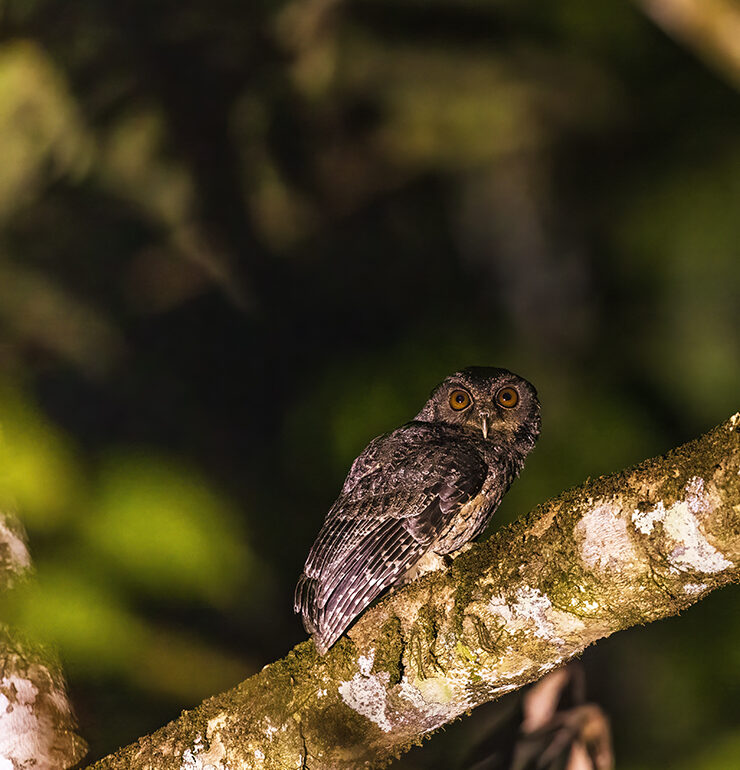
Although by this time we had already clocked around a hundred species after a day and a half in Guyana, we were understandably eager to explore the famous rugged interior of the country. The vastness of the place means not only that one is unable to visit in a single day – but getting there is a day in itself. Unless, of course, a small aircraft is involved. Our small party was on four wheels, however, so we departed in darkness, hit the town of Linden by sunrise, and after a quick breakfast there we were on our way south.
Tyres were de-pressurised for the journey that didn’t involve any paved roads, and before long we were acclimatising to the reddish clay of the roadway bordered by endless stands of forest. The forest here erupts out of white sand, and supports a wide variety of habitat-specific creatures. Most prominent were many Swallow-winged Puffbirds, as soon as we entered this habitat they’d be dotting the treetops. At times, we’d see them dart from their perches, make flycatcher-like sallies to then return to the same perch. Quite unlike the concept of a puffbird, I thought. It was only after reading up on the species I realised that it was not only me who thought this way.
Crossing the road was a small flock of Cayenne Jays, while not my first corvids, they were my first jay species – and a thorough joy to watch. Good looks at them showed baby-blue eyes set against jet black dotted with a white paintbrush. What a beauty.
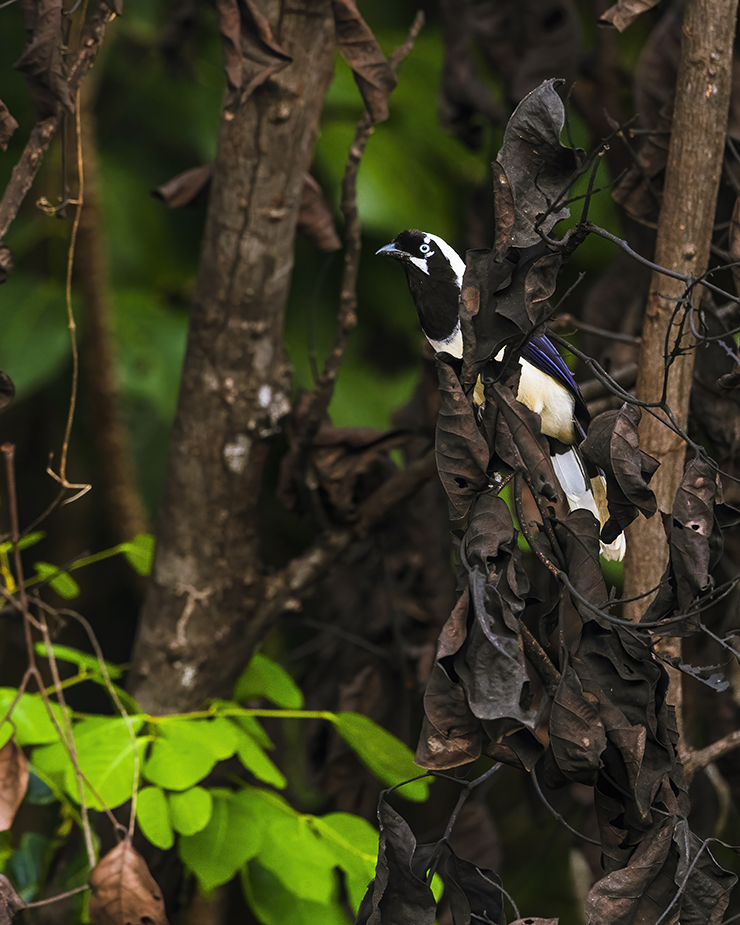
Cayenne Jay
On a short stop to stretch and gather our senses for the remainder of the drive, we picked up a few other birds including Green-backed Trogon and Variable Chachalaca.
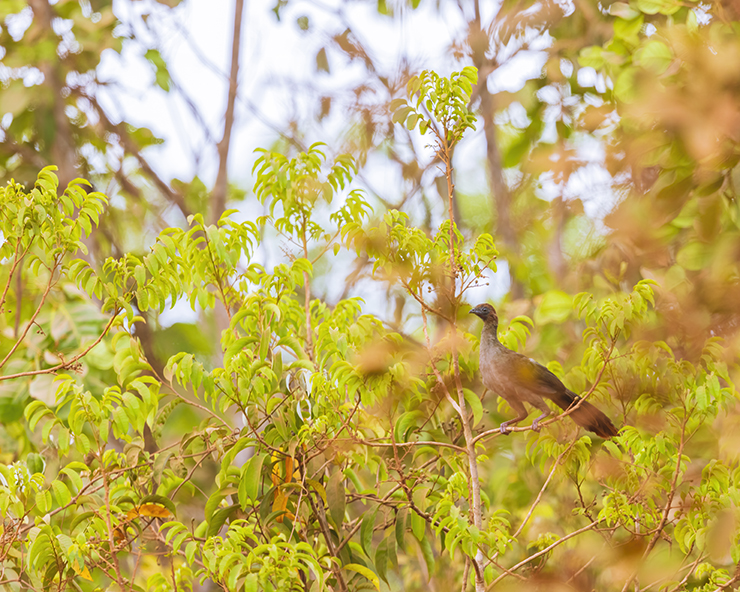
Variable Chachalaca
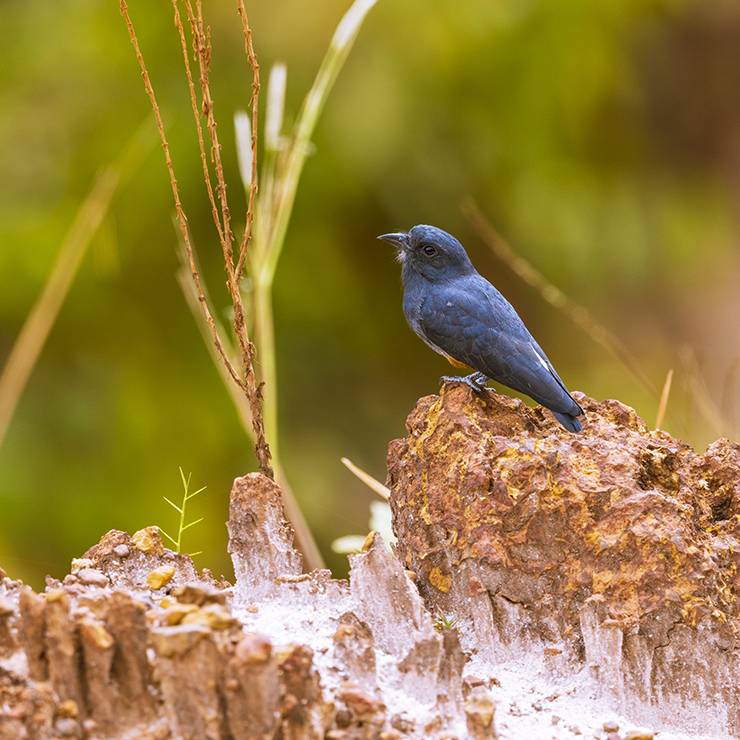
Not too long later, around another bend we caught a pair of Swallow-winged Puffbirds at eye level. They are dependent on the sandy soil for nesting; these are tunnel-nesters.
We didn’t make many more stops during the drive, as distance covered was slightly more important than birds seen – we didn’t want to miss lunch or the river crossing! As an islander, the river crossing was truly remarkable. On Trinidad, the banks of the largest rivers are never more than a stone’s throw apart. Here, the mighty Essequibo River could only be crossed via barge, on the hour, every hour.
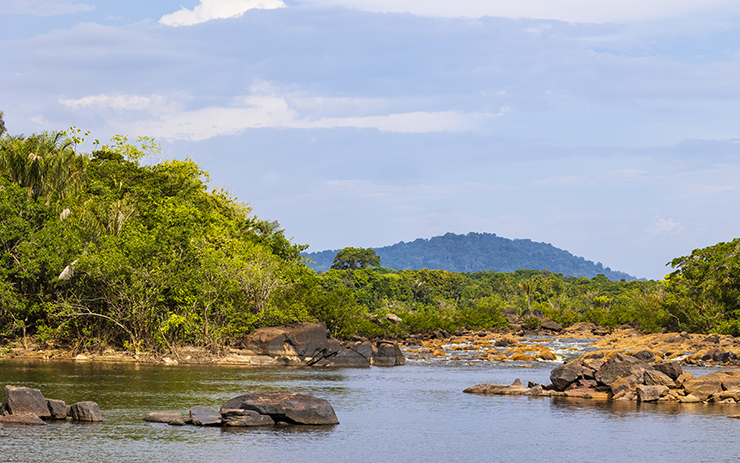
The Essequibo River flows through a prehistoric landscape.
By now, it was mid-afternoon, and fortunately our lodge was only a few minutes from the disembarkation point after the crossing. Driving slowly along the entrance road to the lodge we came upon a lone Marail Guan dabbling in the leaf litter nearby.
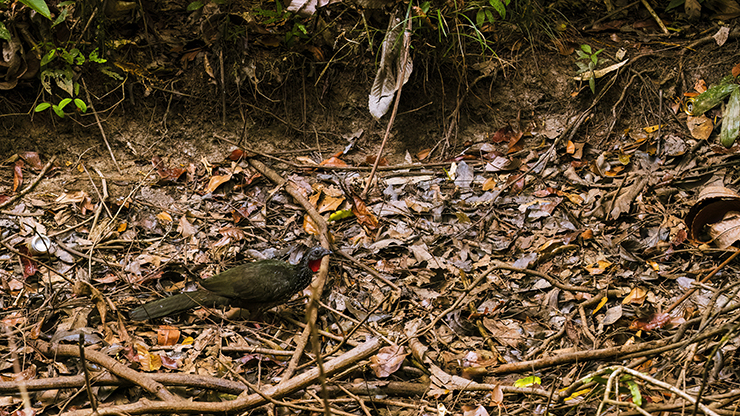
Marail Guan
On the grounds of the Iwokrama River Lodge where we were settled in for the night, there were several feathered distractions that detracted from courtesy conversations. A flock of Painted Parakeet for instance routinely disrupted any relative peace and quiet as they flew from one end of the property to another. I missed the photo on this afternoon, but I set it as a goal for the following day…
Many other passerines dotted the trees, though. We saw Red-capped Cardinal, Chestnut-bellied Seedeater, in addition to the usual cadre of Tropical Kingbirds and Great Kiskadees.
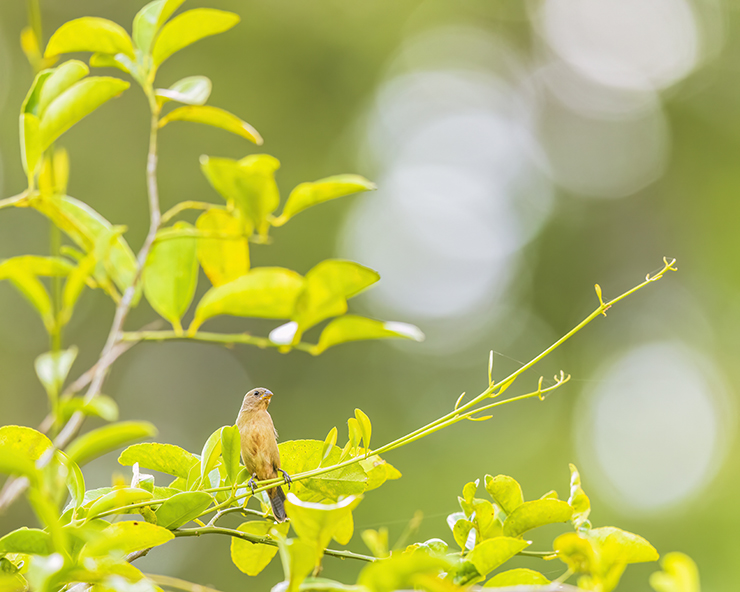
Chestnut-bellied Seedeater
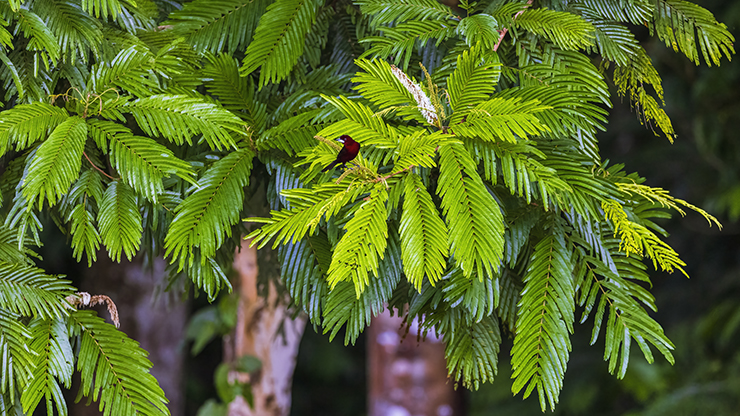
Silver-beaked Tanager, a familiar face for me!
Leon suggested that we enter the forest to check for the enigmatic Capuchinbird before it got too late. The sun was already threatening to dip beyond the treeline, and there was not much time. Walking through the forest we were smitten by the setting more than the creatures – it was invigorating to walk among giant trees, mossy vines, and soft leaf litter. A movement in the distance turned out to be the first of many LBJ’s of the trip.
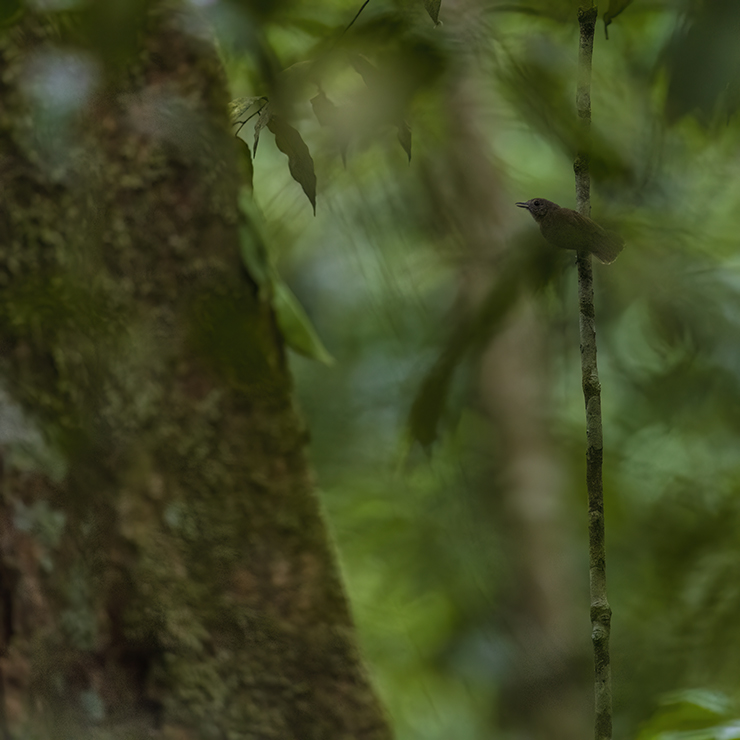
Dusky-throated Antshrike
Sadly, it turned out to actually be too late for any Capuchinbird sightings, but on our way back we were surprised by an exceptionally musical vocalisation. Something so intricately patterned around auditory consonance could only mean a single species: the much sought-after Musician Wren!
Now, I hadn’t a glimmer of hope of seeing this species before getting to Guyana. I knew it existed, and surely I wanted to see it – but I never thought it would happen. The species doesn’t attend to mixed-species flocks and is often up to chance encounters, like this one. Fortunately, this individual was singing, we wouldn’t have had a clue had it not been vocal.
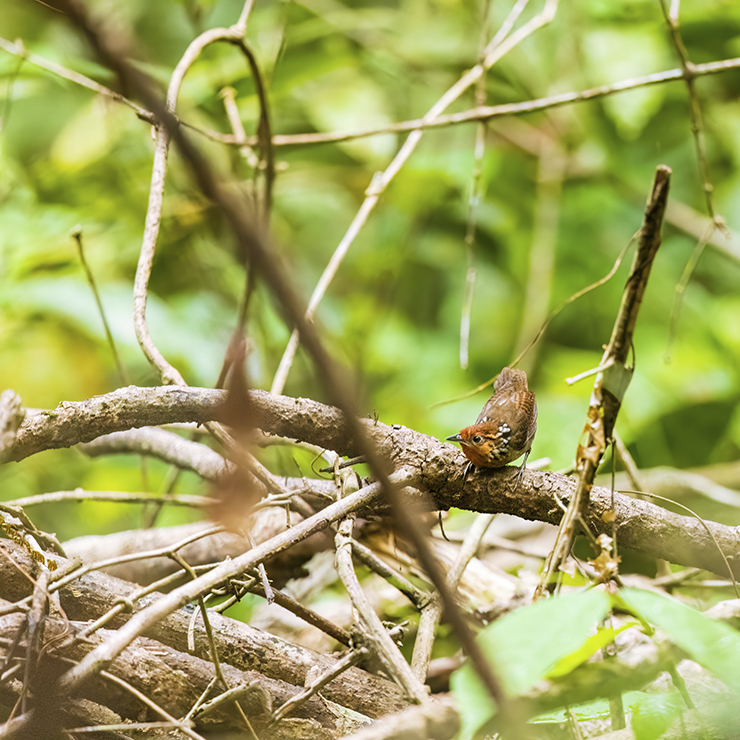
Musician Wren
Back at the lodge the sun had already disappeared and the sky was beginning to showcase the breadth of the visual spectrum. Hundreds of Band-rumped Swifts gathered, and Leon informed me that they were about to head into their roost – a massive tree stump just at the forest edge. It was indeed huge, and hollow; and as predicted the swifts began funnelling themselves into the stump as the sky darkened.
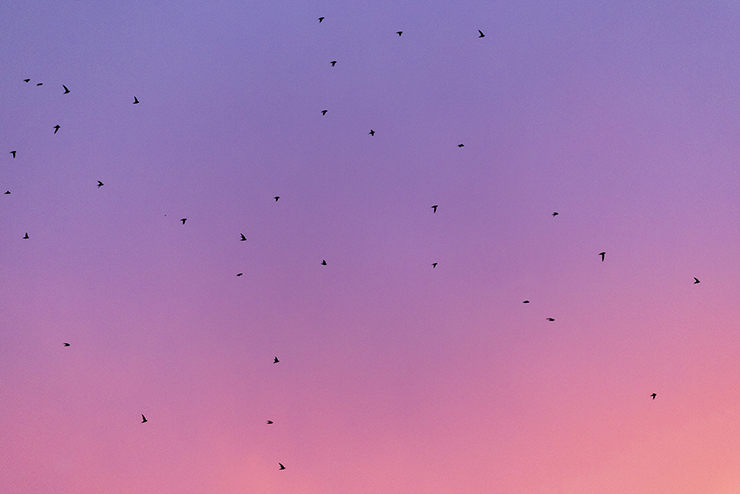
A portion of the flock of Band-rumped Swift before they disappeared for the night.
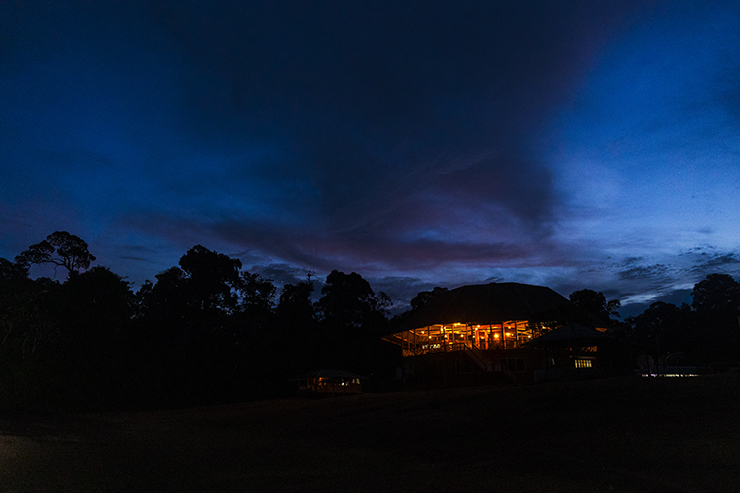
Iwokrama River Lodge, settled in along the banks of the Essequibo, nestled in almost one million acres of protected forest.
Of course, after a gruelling all-day drive, what do we do after dinner? Go owling, naturally! We took a short walk that only turned up a single species – but an incredible owl nonetheless.
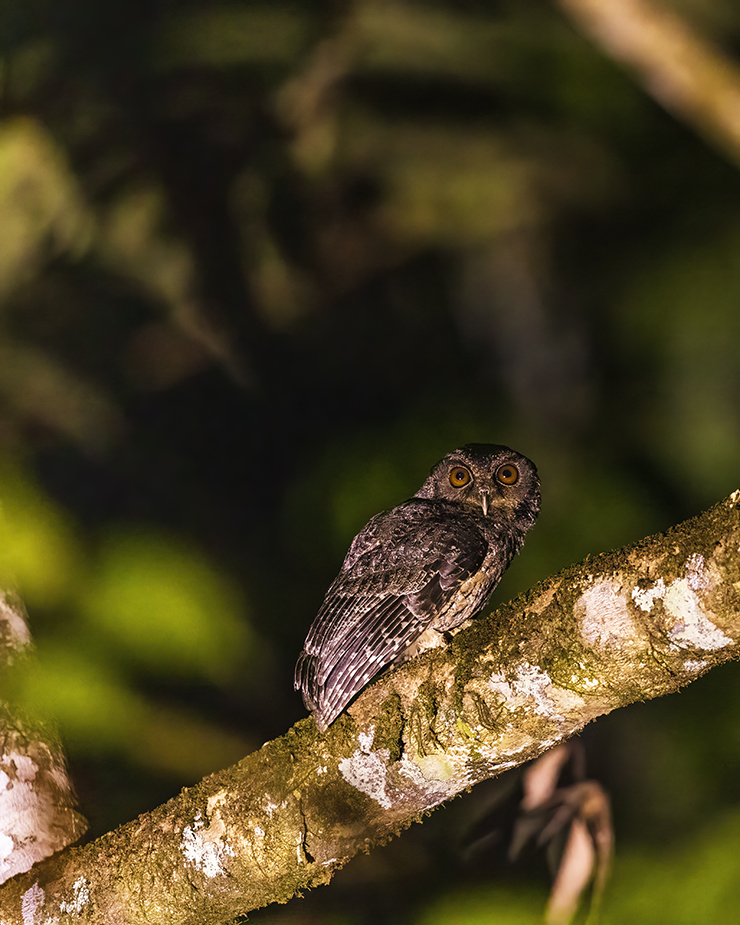
Tawny-bellied Screech-Owl
With a full belly and sleep beginning to knock on my door, we called it a night.













Leave a Comment